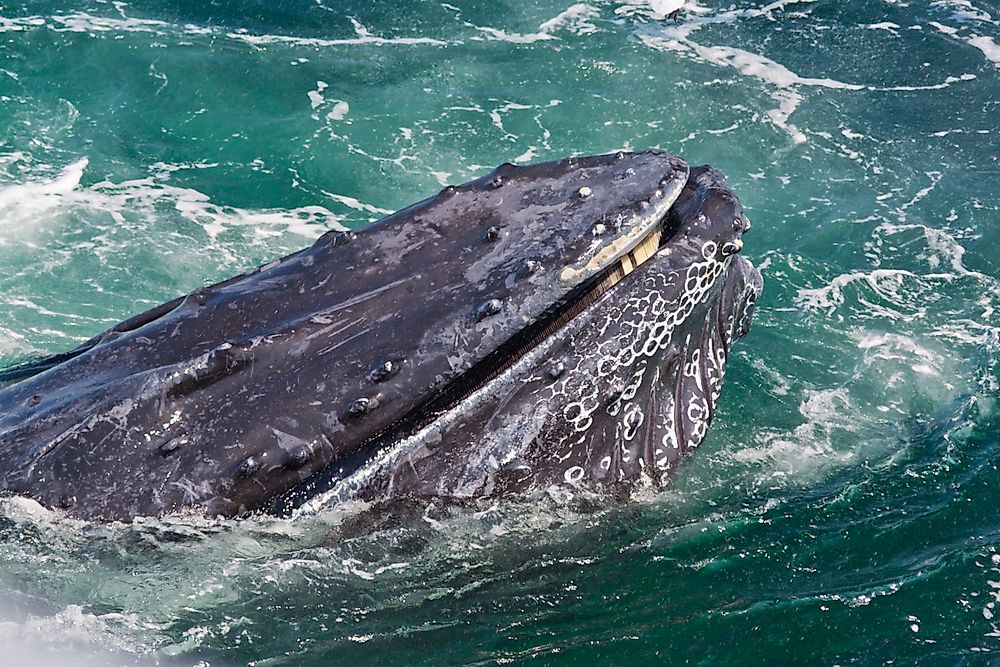What Do Blue Whales Eat?

The blue whale is one of the most well-known species of marine mammal in the world. The blue whale's fame stems from the fact that it is currently the largest animal on Earth. Scientists have identified three unique subspecies of the blue whale which live in different oceans, including the Atlantic Ocean, Pacific Ocean, Antartic Ocean, and Indian Ocean. The global blue whale population has reduced significantly within the last century mainly due to hunting. In response, various organizations have been established in an attempt to protect and increase the global population of blue whales.
Diet of Blue Whale Calves
Blue whales are mammals and therefore young blue whales, called calves, feed on their mother's milk after birth. Blue whale calves can rely exclusively on their mother's milk for as long as 18 months, and can consume nearly 150 gallons of milk each day during the first year of life. Blue whale milk contains nearly 50% fat, which is essential for a calf's growth. While drinking this milk, blue whale calves gain roughly 8 pounds per hour until they are about eight months old. Calves continue to be dependent on their mother's milk until they can thrive on their own.
Diet of Adult Blue Whale
Due to their large size, adult blue whales spend a vast amount of time feeding to obtain energy and nutrients. The primary food source a the blue whale is krill, a type of crustacean found all over the world. Apart from krill, blue whales have also been known to feed on several species of copepods. The type of krill that the whales feed on depends significantly on location. For example, in the northern region of the Atlantic Ocean, the species of krill available include Meganyctiphanes norvegica, Thysanoessa longicaudata, and Thysanoessa raschii. In the northern region of the Pacific Ocean, the species of krill available includes Euphausia pacifica, Nyctiphanes symplex, and Thysanoessa longipes. Some of the krill species found in the Southern Hemisphere include Nyctiphanes australis, Euphausia superba, and Euphausia valentini. A fully grown blue whale can consume as many as 40 million krill in a single day, which weighs roughly 177,000 pounds. The primary reason why whales feed on such vast quantities of krill is that they have massive energy requirements. A fully matured blue whale needs at least 6.3 Gigajoules of energy on a daily basis.
Feeding Habits of the Blue Whale
Due to the massive amount of energy they require, blue whales tend to spend vast quantities of time in regions with a large concentration of krill. During the day, blue whales may dive to a depth of approximately 330 feet in search of krill. Blue whales feed through a unique method of filtering that is common to other baleen whales. The blue whale slowly absorbs water and food, and the water is expelled while the food is swallowed.
Threats to Blue Whales
One of the most significant threats that face the global blue whale population is collisions with ships. The blue whale population in California is most at risk of being hit by ships. Other threats facing blue whales include hunting and pollution of their habitats.











